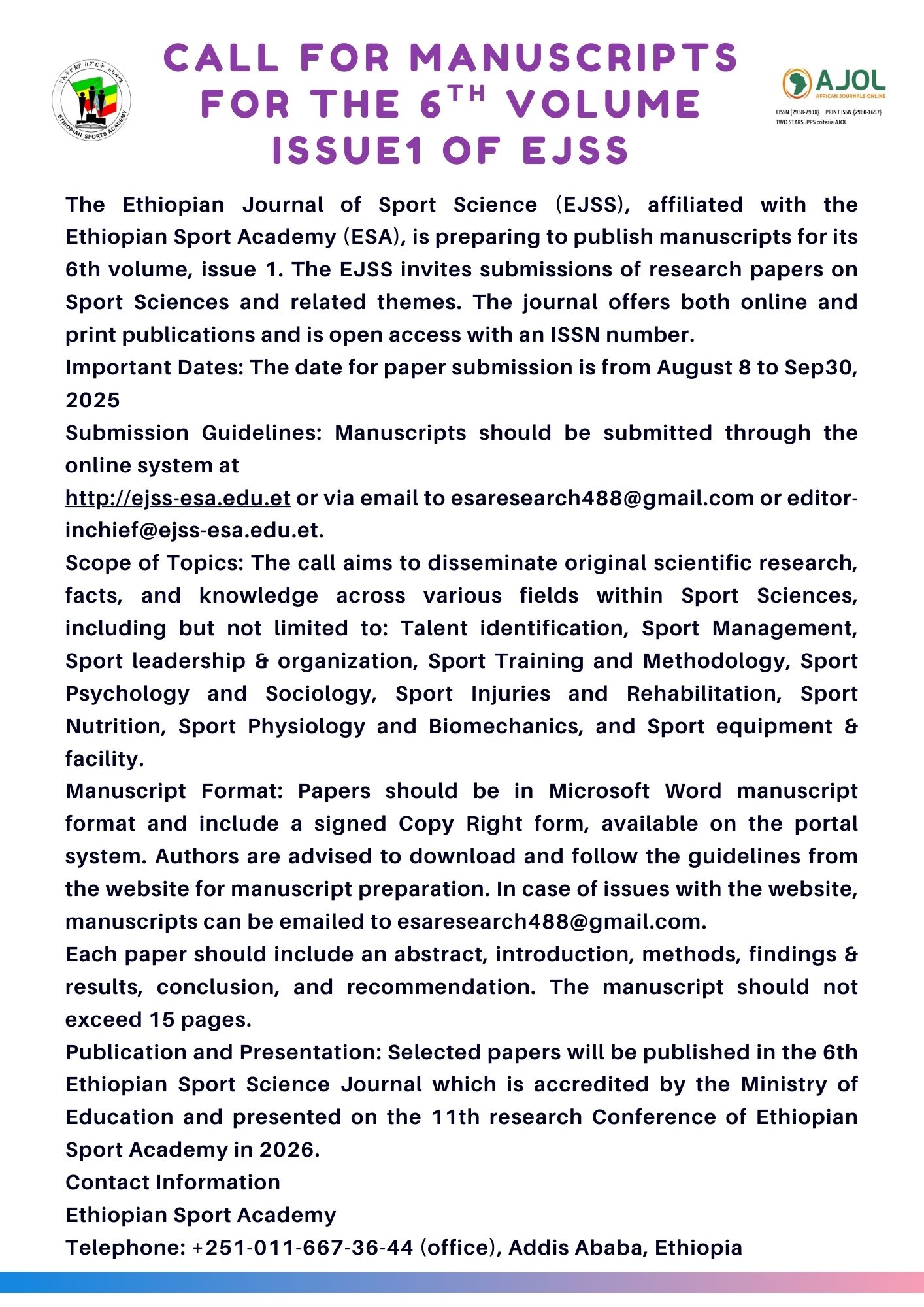EFFECT OF AEROBICS AND RESISTANCE EXERCISE TRAINING INTERVENTION ON BLOOD GLUCOSE CONTROL IN TYPE2 DIABETIC PATIENTS REGARDING AMBO UNIVERSITY REFERRAL HOSPITAL
Keywords:
Type 2 diabetes mellitus, , glycosylate haemoglobin, fasting blood glucose, Vo2 maxAbstract
Type2 diabetes mellitus results from a combination of the inability of muscle cells to respond to insulin (insulin resistance) and inadequate compensatory insulin secretion. The addition of exercise to regular diabetic medication provided significantly favourable effects on glycemic control through managing blood glucose level. The purpose of this study was to examine the effect of aerobic and resistance exercise training intervention on blood glucose level in type2 DM outpatient. Twelve physically active adult that pass the set criteria with mean age of 50.43±12.50 with type 2DM were the subject of this study. The subjects were purposively selected by using convenient sampling technique. SPSS (23 version) were used for statistical data analysis. The paired sample T-test was used to test if there was a significant change in parameters. (P= 0.05). From our finding, we observed that, Fasting blood glucose, body weight, body mass index, volume of oxygen consumption (Vo2max) and resting heart rate with in type2 diabetes were significantly decreased following the eight weeks intervention of combined aerobic and resistance exercise. Although, each type of exercise has its own benefit in glycemic control, this value was not achieved through a single exercise. Type2 diabetes mellitus results from a combination of the inability of muscle cells to respond to insulin (insulin resistance) and inadequate compensatory insulin secretion. The addition of exercise to regular diabetic medication provided significantly favourable effects on glycemic control through managing blood glucose level. The purpose of this study was to examine the effect of aerobic and resistance exercise training intervention on blood glucose level in type2 DM outpatient. Twelve physically active adult that pass the set criteria with mean age of 50.43±12.50 with type 2DM were the subject of this study. The subjects were purposively selected by using convenient sampling technique. SPSS (23 version) were used for statistical data analysis. The paired sample T-test was used to test if there was a significant change in parameters. (P= 0.05). From our finding, we observed that, Fasting blood glucose, body weight, body mass index, volume of oxygen consumption (Vo2max) and resting heart rate with in type2 diabetes were significantly decreased following the eight weeks intervention of combined aerobic and resistance exercise. Although, each type of exercise has its own benefit in glycaemic control, this value was not achieved through a single exercise.





